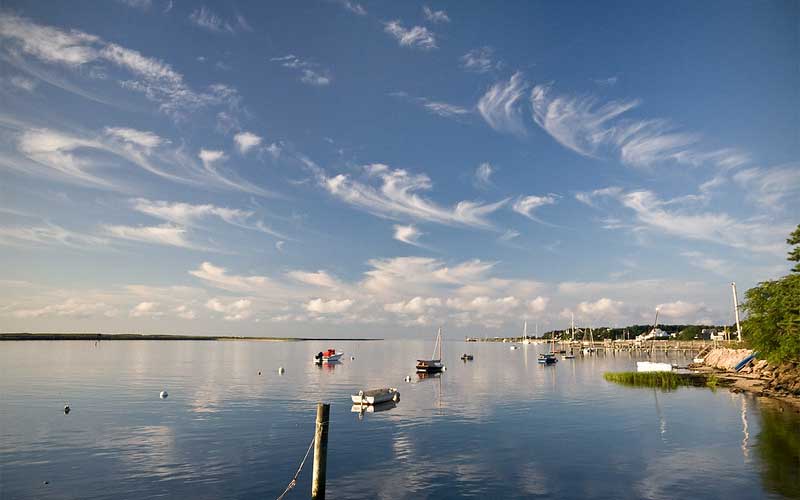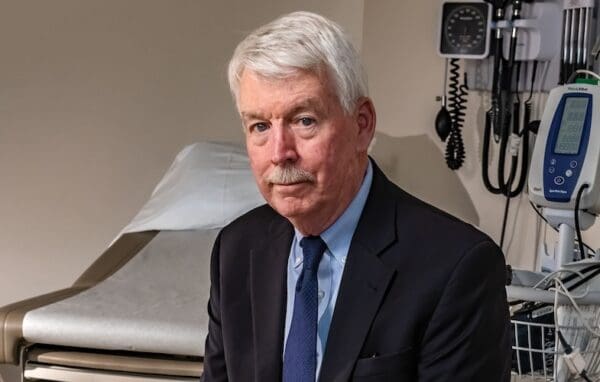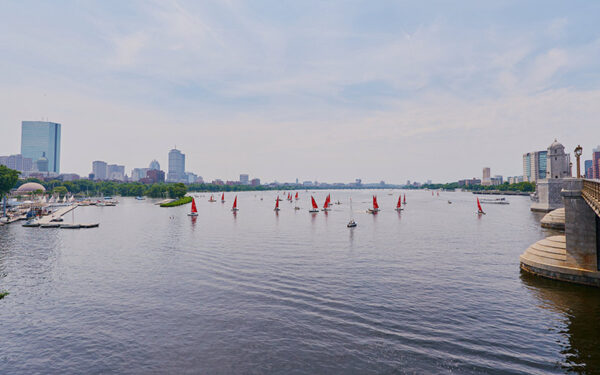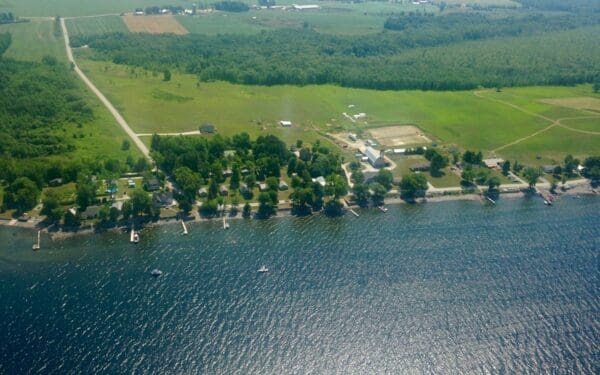
South Yarmouth's Bass River is one of the waterways where water quality doesn't make the grade. Photo: Alan Grinberg (CC BY-NC-ND 2.0)
Andrew Gottlieb serves as Executive Director of the Association to Preserve Cape Cod, which has been working to preserve, protect, and enhance the Cape’s natural resources for more than 50 years.
More than two-thirds of Cape Cod’s coastal embayments and more than one-third of its freshwater ponds are suffering from unacceptable water quality due to excess nutrients, while the Cape’s public drinking water supplies overall have maintained a high standard of quality. That’s the conclusion of a comprehensive analysis of the Cape’s water resources, released recently by the Association to Preserve Cape Cod (APCC) in its first annual State of the Waters: Cape Cod report.
The primary cause of water quality decline is excessive nutrients from inadequately treated wastewater, stormwater runoff, and fertilization of landscaping. Most of the Cape is served by Title 5 septic systems, which are ineffective in removing nutrients from waste. Poorly treated stormwater runoff and fertilizers are other sources of nutrients in the Cape’s water bodies and can have a big impact when close to surface waters.
Towns have prioritized the protection of drinking waters but not surface waters
The disparity between the degraded quality of surface waters and the continued quality of drinking water reflects different approaches to management by the Cape’s 15 towns. A clear public policy commitment was made to protect drinking water supplies over 30 years ago. Towns protected water supply areas through open space acquisition and wellhead protection zoning. As a result, that water supply quality has remained excellent.
However, towns failed to take comprehensive action to protect surface waters. The boom in housing development in recent decades, coupled with inadequate wastewater management, has caused the widespread decline of waters across the Cape.
The majority of the Cape’s coastal embayments are impaired
The findings are damning. Data were available for 48 coastal embayments, for which 152 separate monitoring stations were analyzed and scored. Of the 48, more than two-thirds – 33 embayments or 69 percent – had segments with unacceptable water quality. Fewer than one-third – 15 embayments or 31 percent – had acceptable water quality throughout the entire embayment.
Of the monitoring stations, nearly two-thirds – 98 stations or 64 percent – received unacceptable water quality scores. A little over one-third – 54 stations or 36 percent – were scored as having acceptable water quality.
Most of the embayments graded as having unacceptable water quality lie along the western, southern, and eastern coasts of Cape Cod. These are regions where the watersheds generally contain more densely developed areas served by Title 5 septic systems and where embayments have low tidal flushing rates due to the combination of narrow openings to the ocean and relatively small tidal flux.
The freshwater ponds analyzed also are unhealthy, though more monitoring is needed
Of the Cape’s freshwater ponds, more water quality monitoring is needed. Only 149, or 15 percent, of the 996 ponds on Cape Cod are monitored for water quality. Of the monitored ponds, over one-third – 58 ponds or 39 percent – had unacceptable water quality scores. Fewer than two-thirds – 91 ponds or 61 percent – were determined to have acceptable water quality.
Twenty public water supplies in the 15 towns across the Cape were all graded as excellent in APCC’s report, based on existing drinking water quality standards. However, contaminants of emerging concern, such as PFAS, endocrine-disrupting compounds, pharmaceuticals, and microplastics, are not monitored for most public water systems, and drinking water standards for these contaminants have not been established.
Water quality issues can be solved, but action is needed now
Solving these water quality problems requires effort on the local level. APCC’s action plan recommends that towns make water resource protection and restoration of embayments and ponds a high priority. Towns must adopt and implement long-term strategies for managing wastewater consistent with the regional 208 Plan, dedicating at least 50 percent of short-term rental tax revenue to investments that include wastewater infrastructure, improving stormwater treatment, and adopting effective land-use practices that protect water resources.
Our action plan urges residents to get more involved in the local decision-making process, demand action by town officials to protect water resources, and support local investments in wastewater infrastructure and viable alternative wastewater treatment strategies at town meeting and in town elections.
The people of Cape Cod have the responsibility – and the power – to restore water quality. The time is now.



